When we think of plum fruits, we often imagine small round fruits with dark skin and yellow flesh.
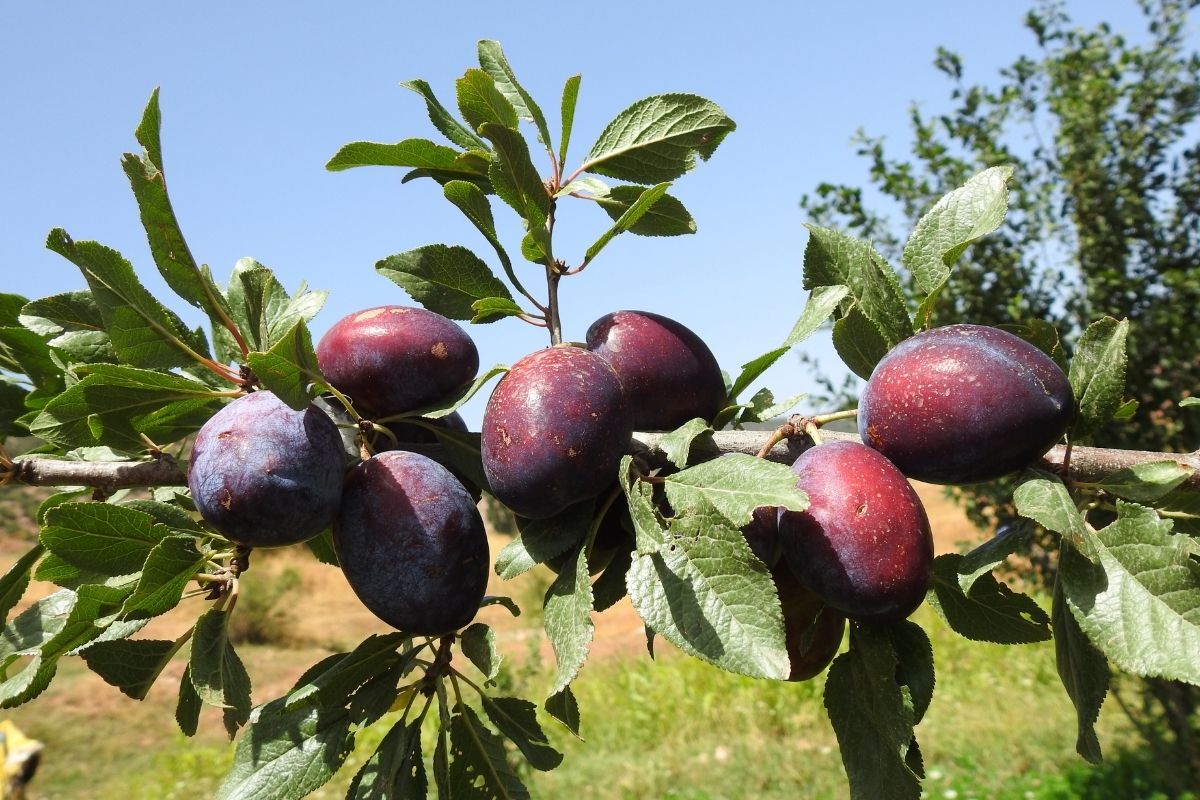
But did you know that this is only one kind of plum in a vast spectrum of fruit? In fact, plums can come in various shapes, sizes and colors – with certain varieties being known for their delicious taste.
But how can you tell these plums apart and where do they come from? Well, to answer these questions, we have decided to use our extensive knowledge of exotic fruits to help.
In the following article, we have compiled a list of plums from around the world, so that you can learn more about their characteristics and uses.
These plums can be found in supermarkets across the country and promise to deliver a flavor experience, unlike anything you have ever tasted before. So why not take a look down below and see which plum catches your eye, we promise you won’t be disappointed with the results…
European Plum (Prunus Domestica)
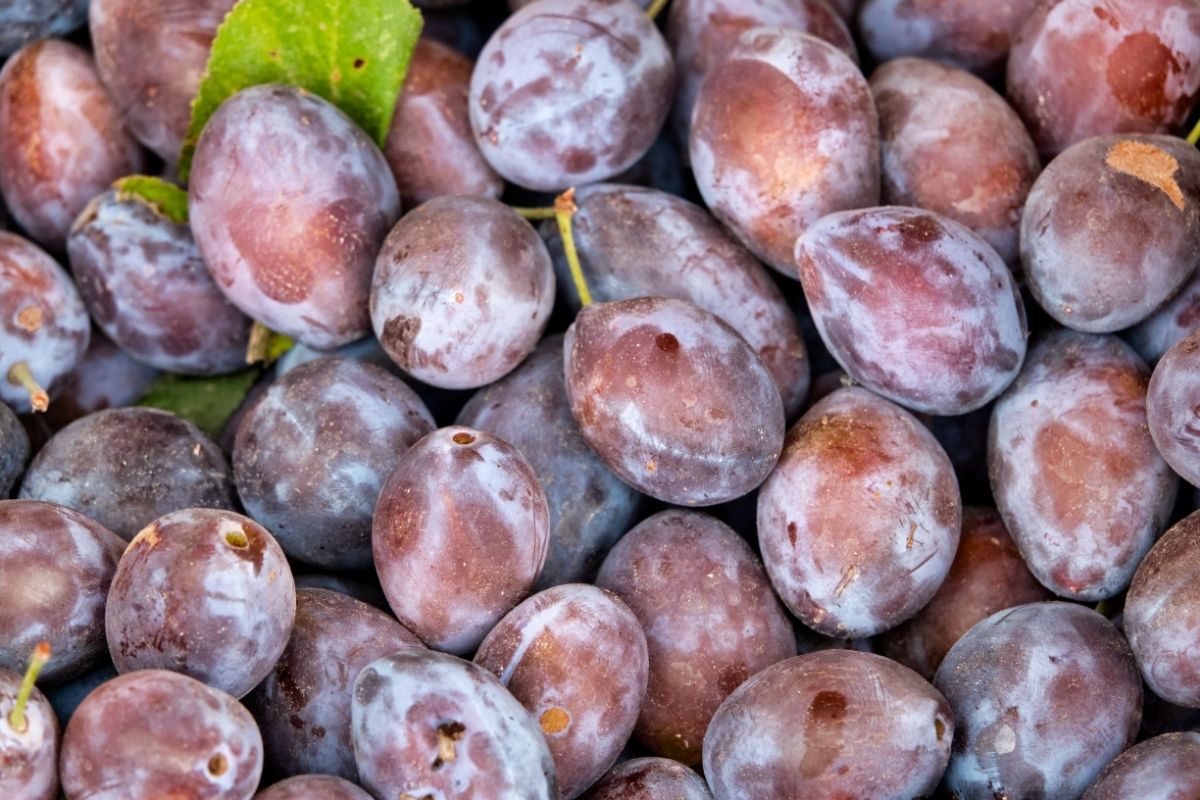
For the first entry on our list, we have chosen the European plum – a delicious fruit known for its dark skin and yellow flesh.
Not only is this fruit popular, but it also includes other plum varieties such as damsons and mirabelles, which we will discuss in a later section. The fruit is cultivated across Europe and Britain, where it can be eaten raw or used to make desserts and preserves.
However, the plum is also commonly used to make prunes, with this particular species being the main fruit used in the drying process. Because of its numerous subspecies, this plum is probably one of the most important plums in the world.
Damson Plums (Prunus Insititia)
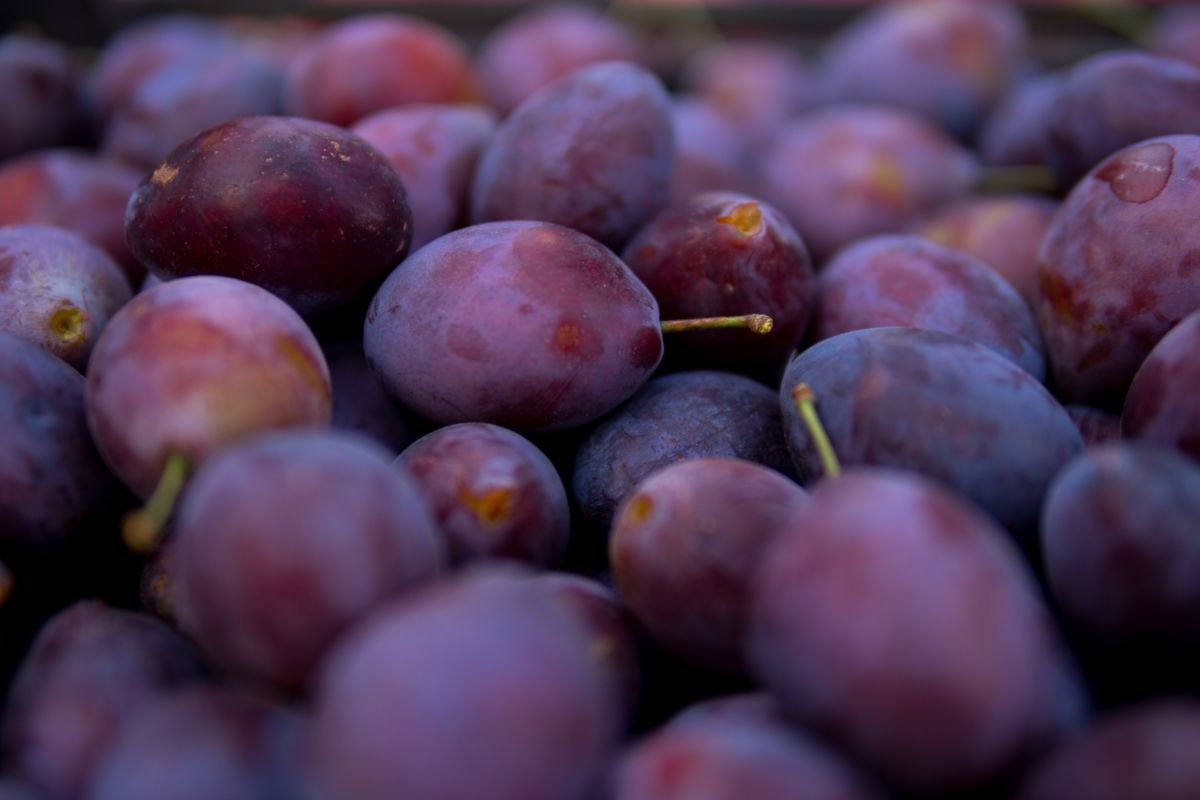
This variety of plum is native to Europe and can be identified by its dark purple skin and golden flesh.
Despite containing vast amounts of sugar, the fruit is known for its bitter and acidic taste, which makes it a wonderful addition to both sweet and sour dishes. However, the plum is commonly used to make jellies and other preserves.
In Europe, damson plums are harvested from late August to early October and come in numerous cultivar subspecies.
Elephant Heart Plum (Prunus Salicina)
As the name suggests, this variety of plum is a large stone fruit that comes in the shape of a heart. The plum is known for its dark red skin and boasts a firm texture.
The inside of the fruit is said to be a vibrant red, with the succulent flesh boasting a sweet juice that runs down your chin after the first bite. While this species can be found all over the world, it is classed as a Japanese plum and tastes delicious when fresh.
However, one of the best things about this plum is how it balances sweet and sour flavors, with the skin being bitter and the fruit itself tasting like berries. The plum is commonly harvested between the summer and fall.
Moyer Plum (Prunus Moyer)

The moyer plum comes from Europe and is considered one of the most delicious plums in the world. The fruit can be identified by its peculiar shape, which is longer and less round than other plums.
Fortunately, these plums are always available and have a pleasant taste. However, if you let them dry out, they can be used to make a selection of delicious meals. The plum itself is known for its overpowering sweetness and is sometimes called a sugar plum or Italian prune.
Like most plums, the crop grows well in orchards with other members of the same genus, such as the brooks plum. One of the best things about moyer plums is that they are resistant to insects, although they can contain harmful bacteria.
RELATED: Sweet As Sugar: 16 Different Types Of Sugar Plum Trees
Greengage Plum (Prunus Italica)
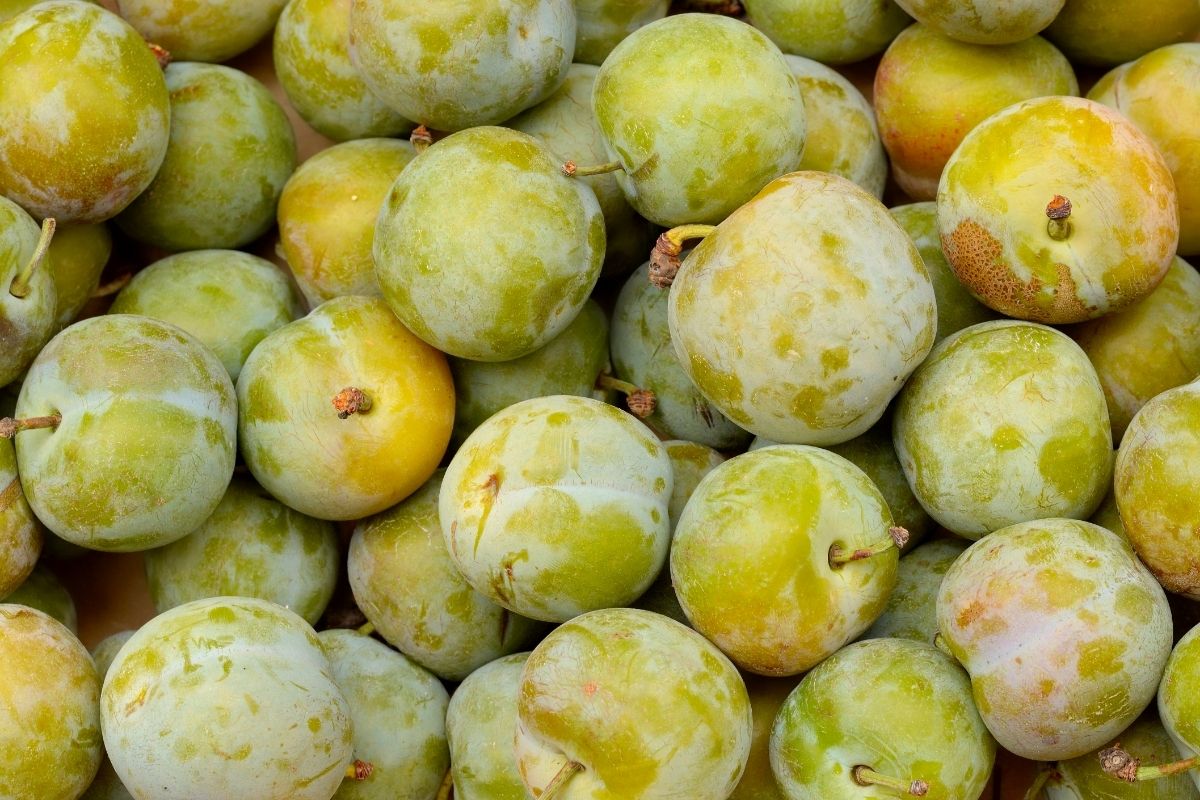
Greengage plums can be identified by their yellow-green skin with red specks, which is their natural color even when they are ripe.
Despite their strange appearance, greengage plums are sweet and delicious, with the species boasting the highest sugar content of any plum variety. The fruit comes in various sizes and will commonly boast succulent flesh bursting with juice and acidity.
Originating in Persia, greengages can now be found all over the world and can be eaten raw or baked into desserts. However, the fruit can also be found in savory dishes such as chilli, ricotta and seafood.
French Plum (Prunus Gallico)
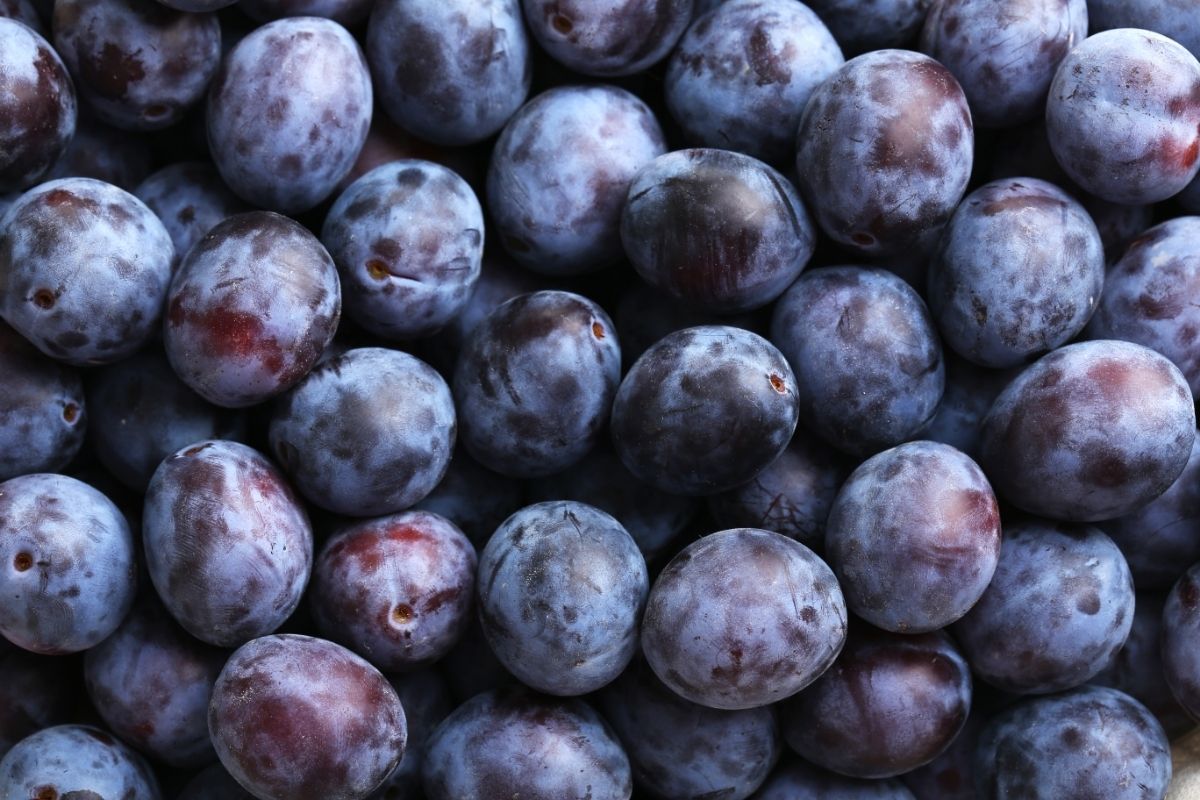
This variety of plum is native to Europe and is commonly dried to make prunes. The stone fruit is oblong in shape and resembles a small pear, although it usually has dark purple-blue skin and amber-colored flesh.
The fruit is commonly harvested during the late summer and can be used for a selection of desserts and preserves. The plum has remained quite popular in the United States, where it is favored for its sweet taste and tart skin.
Friar Plum (Prunus Rosaceae)
The friar plum is yet another species native to the island of Japan, where it can be identified by its dark skin and pale amber flesh. The fruit is round in shape and usually comes in shades of violet or black.
Despite its vibrant colors, the fruit is known for its sweet and juicy taste, with the plum also containing a small pit. They are commonly harvested late in the season and can take around three weeks to mature.
Because of its firm flesh, the friar plum is a popular fruit to eat raw and can be used in a range of dishes from salads to desserts.
Mirabelle Plum (Prunus Syriaca)
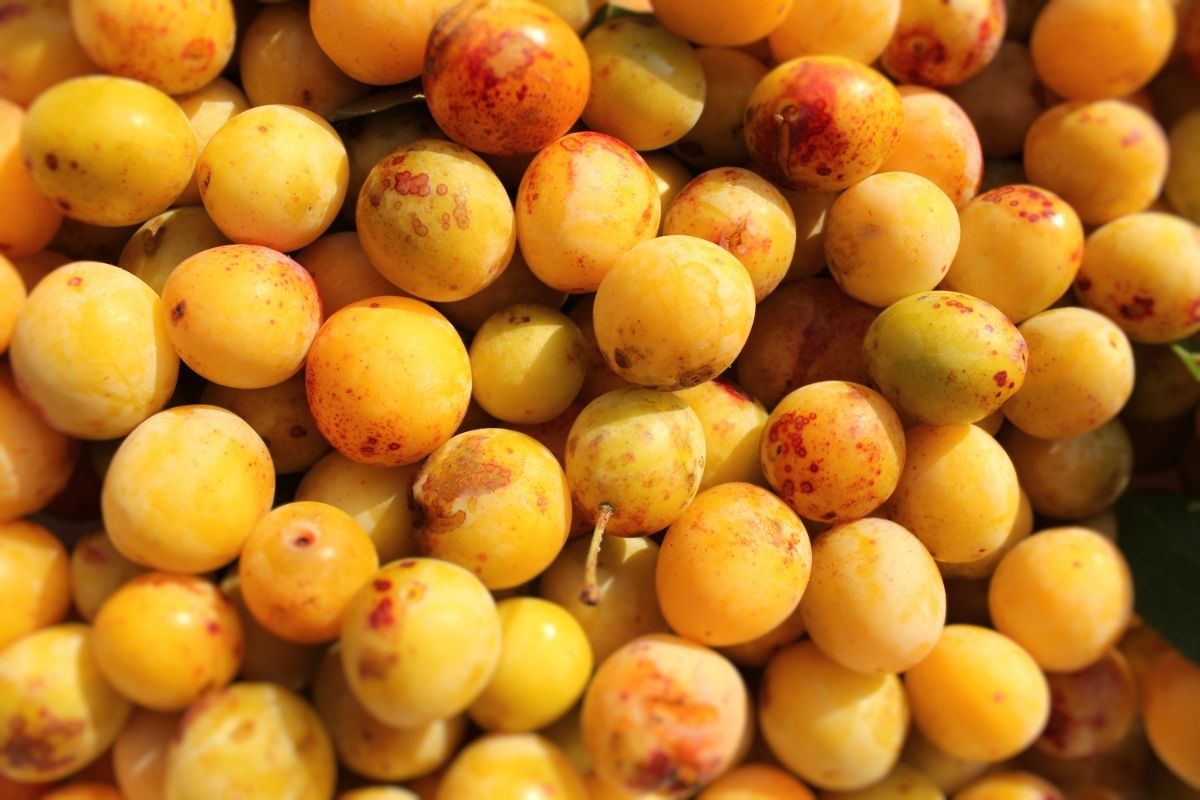
Mirabelle plums are a small round fruit known for their sweet taste and vibrant colors, which usually come in shades of yellow and orange.
The species is commonly grown in France and is well known for its use in jams, jellies and baked goods. Because of their rare nature, mirabelle plums are not found in many countries and are usually imported from Europe because of quality control.
While it is possible to grow the fruit in your garden. The tree must grow in an open space with constant care and maintenance. It is also important to know the best time to plant fruit trees before adding one to your land.
Myrobalan Plum (Prunus Cerasifera)
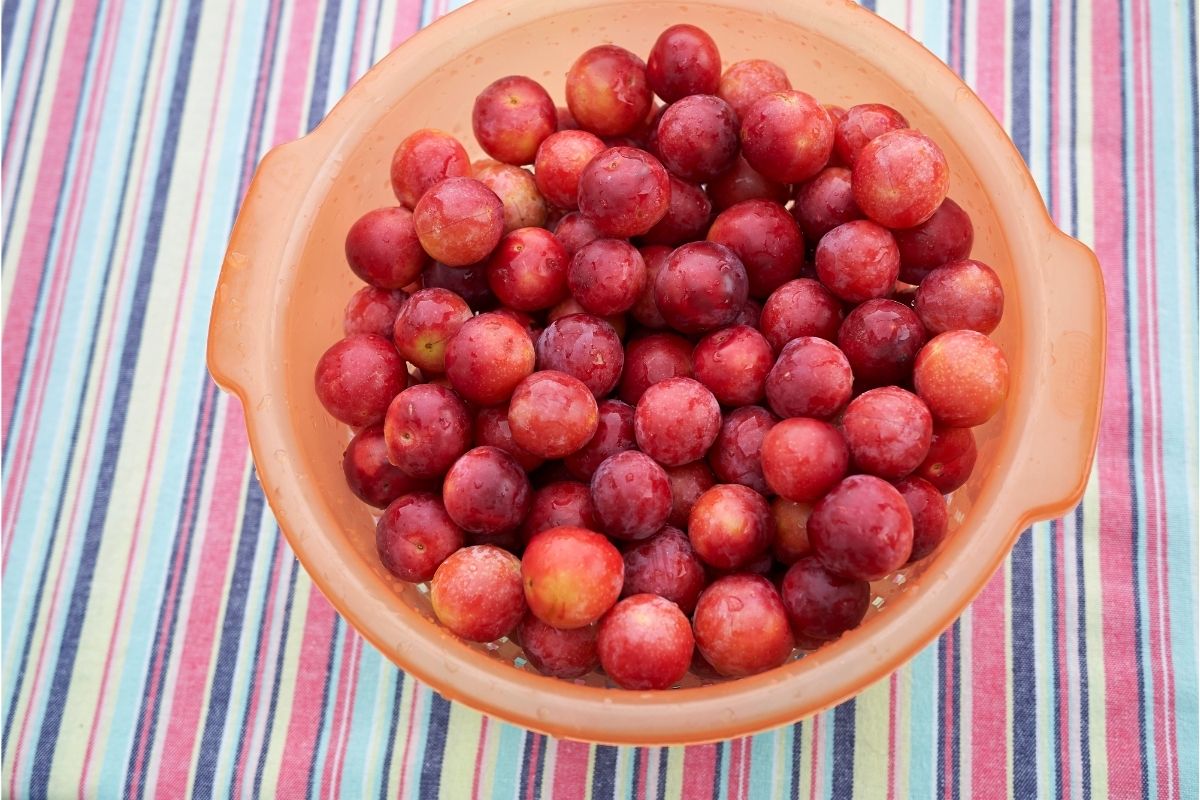
Otherwise known as cherry plums, myrobalan plums can be identified by their small size and warm colors. With the fruit being available in shades of red and yellow.
The fruit comes in many cultivar forms and their taste will range from sweet to sour. While they can be eaten fresh, the plums can also be in use to make jellies and preserves. With the tree being used as an ornamental plant in gardens across the world.
Despite being famous for its small and rounded fruit. The tree can grow to notable heights and is one of the first trees to flower during the spring.
Black Beauty Plum (Prunus Nigra)
This variety of Japanese plum is known for its bright yellow flesh and dark purple skin. With the fruit boasting a ripe and juicy texture that is best eaten fresh.
The fruit can be purchased in both medium and large sizes. With the best way to determine the plum’s ripeness being to squeeze the fruit to see if it is soft. If the plum is hard and unripe, it can be left at room temperature until it is ready to eat.
Black beauty plums are unique for their balance of sweetness and bitterness, which come together to create a delicious union.
Plumcots (Prunus Salicina X Armeniaca)
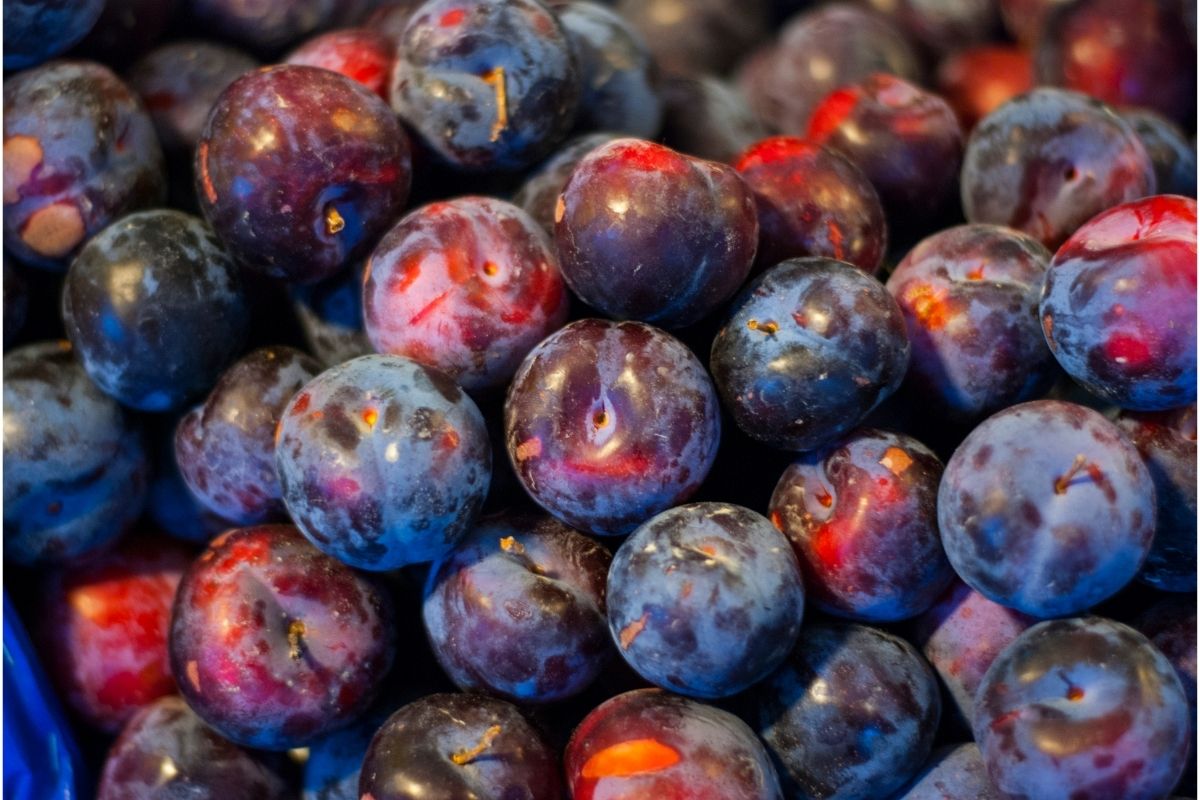
This fruit is an early hybrid of plums and apricots. With the species sharing more in common with the former than the latter.
The fruit can be identified by its oval shape and crisp texture. With the plum boasting orange skin and bold pink flesh. Because of their sweet taste, the fruit is commonly used to make salsa and other condiments – such as jams, chutneys, and spreads.
The fruit is ready to be harvested in the late summer. It can be exported then without the fear of damage during transit.
Pluots (Prunus Salicina X Armeniaca)
Despite being from the same genus as plucots. These fruits are very different from their summery counterparts and often feature bright red skin with pale yellow flesh.
The hybrid is best consumed fresh and has a fragrant taste. Which makes it the ideal ingredient for preserves and jellies. If you find the fruit to be soggy. Then you will need to let them ripen at room temperature for about three days.
Alternatively, it is also possible to ripen pluots in the refrigerator. Although this process can take a few weeks to accomplish.
Japanese Plum (Prunus Mume)
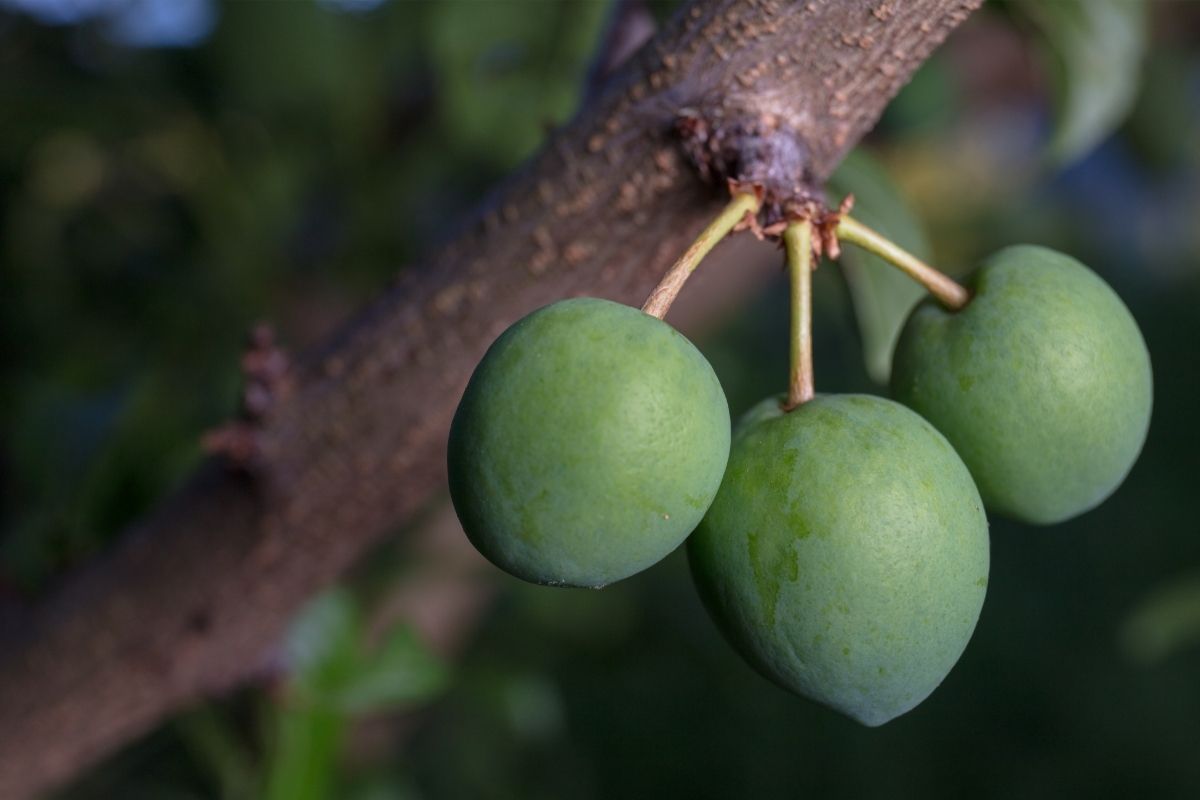
Not to be mistaken for Prunus japonica. This plum is native to Eastern Asia and have yellow-green skin and pale flesh.
Because of its popularity in China and Japan. The fruit features in a range of products from jellies and syrups to drinks and sauces. The blossoms of the tree can even be used to make traditional pancakes eaten throughout Korea.
The plant itself also remains a popular ornament in gardens across the world. Where it is known to produce vibrant pink blooms during the spring and summer.
Conclusion
In conclusion, there are many plum fruits available on the market. With our list only showcasing a small selection of the prunus genus. So if you ever encounter one of these plums in the grocery store, we recommend buying it and giving it a taste.







